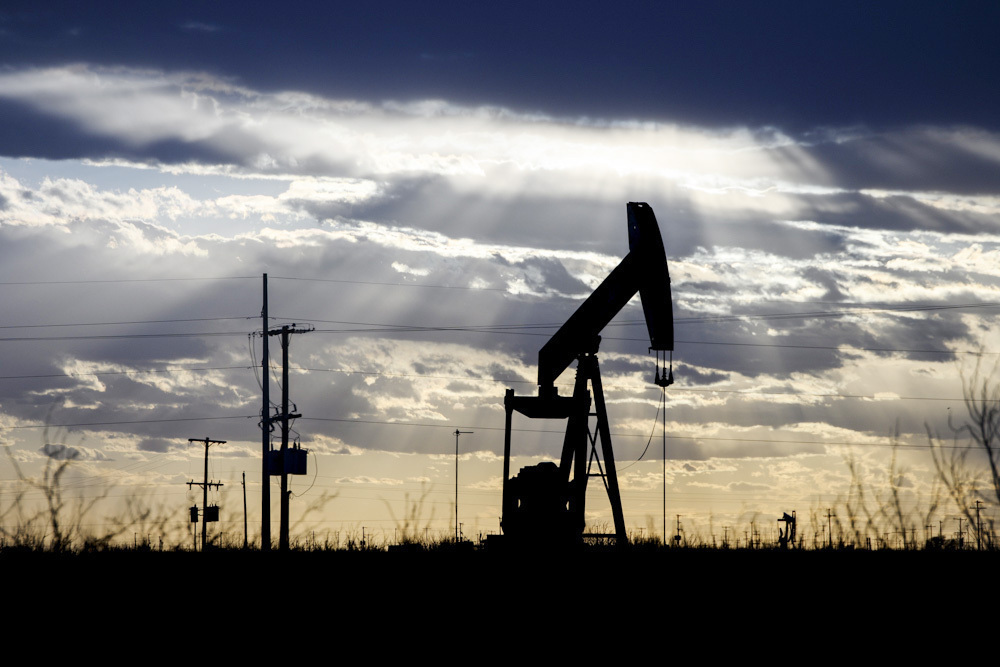
Tradition or myth holds that the Permian Basin’s rich oil and natural gas formations were made from the bodies of dinosaurs, which is an evocative answer that’s more fancy than fact.
In fact, the region has one of the more interesting geologic histories in the world and the answer to where all the oil and gas came from is much more complex than “from the dinosaurs.”
Permian Basin Petroleum Association President Ben Shepperd and Texas Independent Producers & Royalty Owners President Ed Longanecker say the fuels date back hundreds of millions of years.
“This can become very scientific very quickly,” Shepperd said. “The International Commission on Stratigraphy says the natural gas or hydrocarbon deposits found in the Permian Basin are the result of marine and terrestrial entities that lived and died during the Permian Period 299 to 251 million years ago.
“Drawing that answer out a bit more, these hydrocarbons are found in a layer cake of sedimentary formations.”
Beneficially, Shepperd said, the landscape had at its center a series of shallow inland seas.
“These inland seas were the home of a variety of simple and complex living creatures including single-celled organisms, reefs, fish, plants and terrestrial and complex creatures such as animals that may have looked like dinosaurs but actually predated the dinosaurs,” he said. “The Permian was the last period of the Paleozoic Era.
“Dinosaurs lived during the Mesozoic Era from around 251 to 66 million years ago.”
Shepperd said the distinction between the Paleozoic and the Mesozoic eras is made at the end of the Permian in recognition of the largest mass extinction of life recorded in the history of Earth.
“This mass extinction contributed to the amount of carbon material that is now trapped in those producing formations of West Texas and Southeastern New Mexico,” he said. “Just to clarify, the earliest mammals did not appear until the late Triassic Period about 225 million years ago and humans do not show up in the archaeological record until about 2.4 to 1.4 million years ago or hundreds of millions of years after the end of the Permian Period.”
Longanecker said fossil fuels were predominantly formed from decomposing plants and animals, mainly microorganisms like phytoplankton and algae, over millions of years, creating the mineral-rich deposits of today.
“Some have speculated that John D. Rockefeller (1839-1937) coined the term ‘fossil fuels,’ but it actually dates back to the 1700s,” he said. “The geologic history and formation of hydrocarbons in the Permian Basin is complex, consisting of several distinct regions, but the area holds one of the thickest known deposits of Permian-aged rocks in the world.”
Citing references, Longanecker said the Basin is named for the Permian Period 299 million to 251 million years ago, but it traces its origins to the Precambrian tectonic events of 1.3 billion to 850 million years ago.
“The area recognized as a basin today was once a shallow seaway that experienced formational changes during the Paleozoic Era, leading to the formation of the nearby Guadalupe Mountains and other structures in the area we recognize as the Permian Basin today,” he said.
“The Permian Basin area accumulated deepwater materials, deposits of varying sediments and rocks with some regions even developing reefs, all of which became excellent reservoirs and source rocks for petroleum. Fossil fuels are predominantly formed from biomass, mainly microorganisms like phytoplankton and algae, that have been trapped for millions of years.
“Vertebrate fauna like amphibians, reptiles, synapsids and moss animals have been uncovered within the bounds of the Permian Basin as well.”
Synapsids were the largest terrestrial vertebrates in the Permian Period, equalled only by some very big creatures called pareiasaurs at the end of the Permian.



